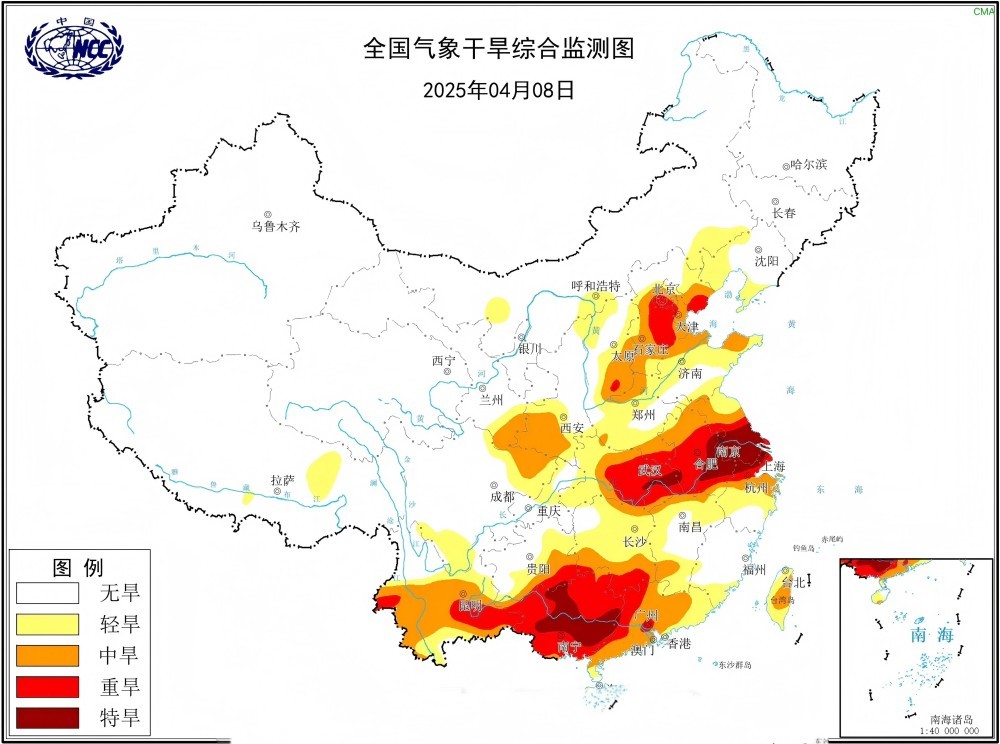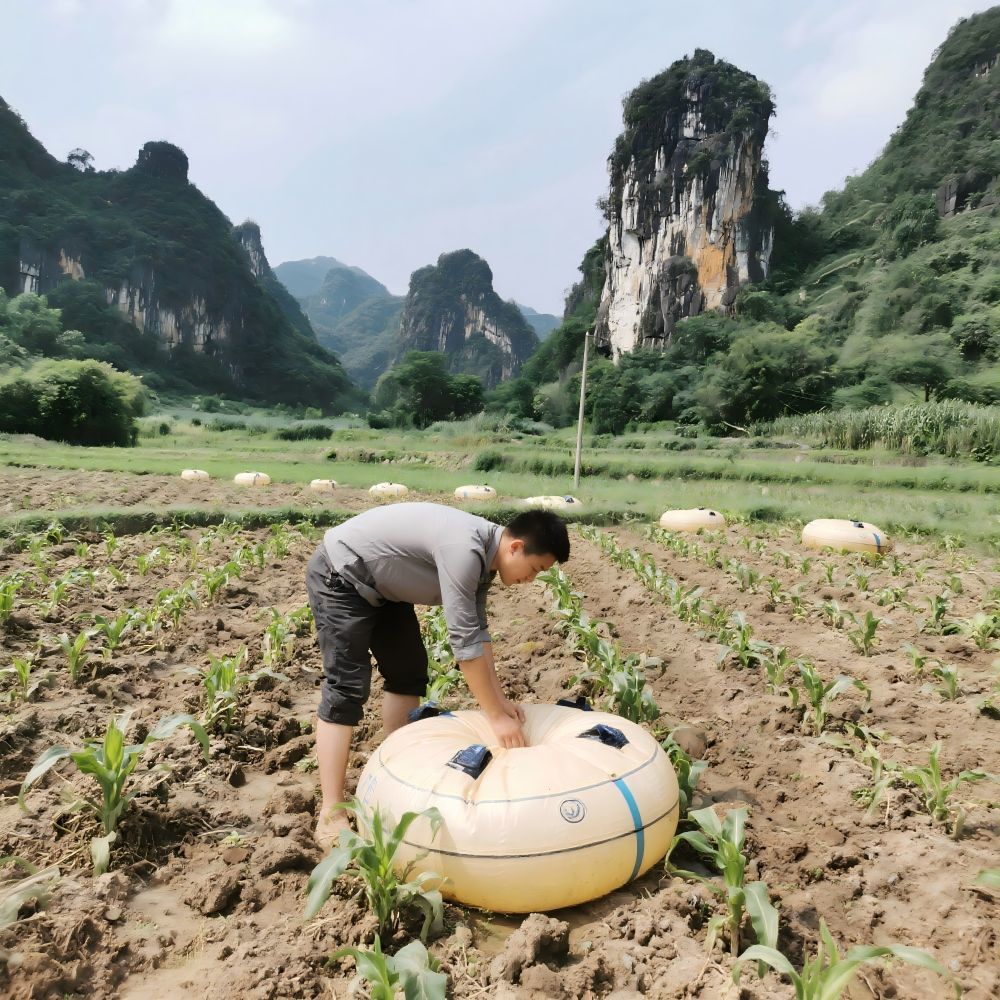NEWS
Cold Air Masses and Their Influence on Spring Drought Dynamics
2025-04-15
Due to the combined effects of cold high-pressure systems, frontal cyclones, and upper-level cold vortices, the northern regions have become a major area affected by strong winds. On the 12th, the daytime winds were the strongest, with gusts reaching level 13 in the mountainous areas of western and northern Beijing, and also reaching over level 11 in parts of Inner Mongolia, Shanxi, and Hebei.
The strong winds have brought many adverse effects to the northern regions, especially in the agricultural sector, where wind damage to greenhouse facilities has impacted crop growth. The northern regions experience a rapid rise in spring temperatures, a high demand for water during the spring plowing, low groundwater levels, and the sustained strong winds have further exacerbated the water shortage situation.

In spring, both the southern and northern regions face varying degrees of spring drought issues each year.
According to Jia Xiaolong, deputy director of the National Climate Center, at the China Meteorological Administration's April press conference, the average temperature in March was 0.6°C higher than the same period in previous years, with a distribution of "high in the east and low in the west," and areas in the central and northern parts of South China were 1-4°C higher. In terms of precipitation, the average rainfall across the country was 4.3% less than usual, with the central and southern regions of the Yangtze River and areas to the south experiencing a 20-90% reduction in rainfall. The distribution of precipitation in the central and eastern regions was "more in the north and less in the south," with meteorological droughts persisting in places like Guangxi.
Currently, most parts of Guangxi, eastern Yunnan, southern Jiangsu, southeastern Anhui, and southeastern Hebei are experiencing moderate or worse meteorological droughts. It is expected that in April, temperatures in South China will be higher and precipitation lower, potentially leading to the continued development of meteorological droughts.
Although the total precipitation in some southern regions is more than in the north, uneven distribution can also cause spring droughts. For example, in Yunnan, Sichuan, Chongqing, and western Guangxi, there is often insufficient rainfall in spring, and droughts severely affect the water storage capacity of reservoirs and paddy fields, leading to severe land cracking. Light rains have no effect when they fall.

In the southwest region, the expected drought has been exacerbated by a special type of karst landform area. Karst landforms are mostly composed of soluble rocks, and through the dissolution and erosion of groundwater and surface water, unique terrain has been formed. The soil layer here is shallow and extremely discontinuous, and the underlying karst zone has developed fissures and pipes. After rainfall, surface water quickly seeps into the ground through fissures and caves, making it difficult to form effective runoff and stable water storage spaces on the surface, resulting in a surface moist environment that can only be maintained for a few days, and frequent karst droughts.
Taking typical karst landform areas such as Yunnan and Guizhou as examples, due to the severe seepage of surface water, even during relatively rainy periods, it is difficult to ensure sufficient water resources for agricultural irrigation and residential use. During spring droughts, soil moisture is rapidly lost, crops cannot grow normally due to lack of water, germination rates are low, growth is slow, and even withers and dies. Moreover, the ecological environment of karst areas is fragile, and once the vegetation is damaged, it is difficult to recover, further reducing the soil's ability to retain water and intensifying the impact of droughts.
In the face of the severe spring drought situation, various regions are actively exploring effective emergency drought relief methods. In terms of water collection, some villages in the southwest karst areas have built small reservoirs to collect surface runoff during the rainy season. These reservoirs are treated to prevent seepage, storing precious rainwater for use in agricultural irrigation during the dry season. Although surface runoff is difficult to retain in karst areas, this targeted water collection method can alleviate the pressure on farmland water use to some extent.
At the same time, some advanced water conservancy equipment has played a key role in drought relief. Large water bags, due to their large capacity storage and convenient transportation features, have become a strong guarantee for emergency water supply. In some mountainous areas of Yunnan, when severe drought conditions cause water sources to dry up, relevant departments fill large water bags with water and transport them to villages and farmland in need by vehicle. These water bags can store thousands of cubic meters of water, meeting the living water needs of villagers for a period and also providing irrigation water for farmland. The water bags are equipped with dedicated water outlets that can be connected to hoses to precisely deliver water to where it is needed.
The flexibility of vehicle-mounted water bags has also been demonstrated. In some mountainous areas of Guizhou, with complex terrain and rugged roads,vehicle - mounted water bladders are installed on specially designed off-road vehicles, allowing them to navigate through narrow mountain paths. These vehicle-mounted water bags can not only deliver drinking water to scattered residential areas but also serve as mobile irrigation sources in agricultural production. Staff drive vehicles equipped with water bags to the fields, and through temporary hoses laid out, irrigate crops, promptly alleviating the water crisis for the crops.
Meteorological experts remind that in drought-prone areas around the world, especially in karst landform regions, it is necessary to closely monitor drought issues caused by extreme weather changes and take appropriate measures. In response to these frequently occurring drought phenomena, regions must focus on strengthening the allocation and management of water resources. The promotion of water-saving irrigation technology is essential, and small-scale rainwater harvesting projects can be built to fully collect limited precipitation, while the rational development and utilization of groundwater resources should be considered, but care must be taken to properly use water collection, storage tools, and facilities to protect the sustainability of groundwater resources.
KEVIN
Information







